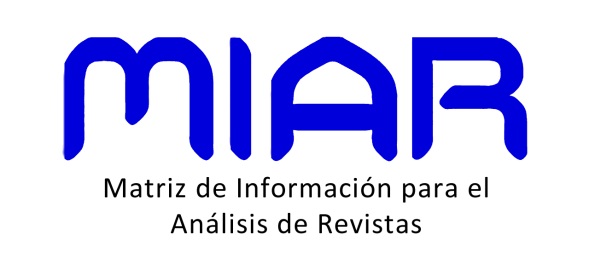Tonal patterns, class generalization, and tonality representation. A model of tonal cognition based on context and learning
DOI:
https://doi.org/10.21932/epistemus.2.2717.0Keywords:
cognición tonal, patrones tonales, generalización por clasesAbstract
In this paper, two well-known models of tonal cognition are reviewed: the distributional model and the interval classes’ vectors (or functional) model. It is argued that these models have some intrinsic problems, particularly about how they propose that tonality is induced and mentally represented. The main problem would be that both of them assume that tonality is represented in terms of classes of musical elements, classes of pitches or classes of pitch intervals, respectively; this is a problem because these classes of elements may not have cognitive reality in listeners’ musical mind. Hence, a model of tonal cognition is proposed that is not based on the idea of ‘class of elements’, but on the idea of inference and progressive generalization of tonal sense. According to this model, tonality would be inferred from the actual elements contained in the musical context being perceived and, finally, it would be represented in terms of tonally active areas whose size and internal profile depend on both musical context and listener’s musical training.Downloads
Metrics
References
Anta, J. F. (2011a). Reevaluando el efecto de la tonalidad sobre la percepción melódica. En A. Pereira Ghiena, P. Jacquier, M. Valles y M. Martínez (eds.), Musicalidad Humana: Debates Actuales en Evolución, Desarrollo y Cognición e implicancias socioculturales. Buenos Aires: SACCoM.
Anta, J. F. (2011b). La predicción como componente clave de las representaciones musicales. En A. Pereira Ghiena, P. Jacquier, M. Valles y M. Martínez (eds.), Musicalidad Humana: Debates Actuales en Evolución, Desarrollo y Cognición e implicancias socioculturales. Buenos Aires: SACCoM.
Bigand E. y Poulin-Charronnat B. (2006). Are we “experienced listeners”? A review of the musical capacities that do not depend on formal musical training. Cognition, 100 (1), 100–130.
Bregman, A. S. (1990). Auditory Scene Analysis: The Perceptual Organization of Sound. Cambridge, MA: MIT Press.
Brentano F. (1874 [1995]). Psychology from an Empirical Standpoint. London: Routledge. Brower C. (2000). A cognitive theory of musical meaning. Journal of Music Theory, 44 (2), 323379.
Brown H. (1988). Interplay of set content and temporal context. Music Perception, 5 (3), 219250.
Butler D. (1989). Describing the perception of tonality in music: A critique of the tonal hierarchy theory and a proposal for a theory of intervallic rivalry. Music Perception, 6 (3), 219242.
Butler D. y Brown H. (1984). Tonal structure versus function: Studies of the recognition of harmonic motion. Music Perception, 2 (1), 624.
Cuddy L. L. y Lunney C. A. (1995). Expectancies generated by melodic intervals: Perceptual judgments of continuity. Perception & Psychophysics, 57 (4), 451–462.
de la Motte D. (1981). Kontrapunkt: Ein Lese und Arbeitsbuch [Contrapunto (L. R. Haces, trad.). Barcelona: Idea Books, 1998] Kassel: BärenreiterVerlag.
Deutsch D. (1972). Octave generalization and tune recognition. Perception & Psychophysics, 11 (6), 411412.
Deutsch D. y Boulanger R. C. (1984). Octave equivalence and the immediate recall of pitch sequences. Music Perception, 2 (1), 4051.
Deutsch D. y Feroe J. (1981). The internal representation of pitch sequences in tonal music. Psychological Review, 88 (6), 503522.
Dowling W. J. y Hollombe A. W. (1977). The perception of melodies distorted by splitting into several octaves: Effects of increasing proximity and melodic contour. Perception & Psychophysics, 21 (1), 6064.
Harnad S. (1990). The symbol grounding problem. Physica D: Nonlinear Phenomena, 42, 335346.
Huron D. (2006). Sweet Anticipation: Music and the Psychology of Expectation. Cambridge, MA: The MIT Press.
Kallman H. J. (1982). Octave equivalence as measured by similarity ratings. Perception & Psychophysics, 32 (1), 3749.
Keijzer F. A. (2001). Representation and Behavior. Cambridge, MA: MIT Press. Krumhansl, C. L. (1990). Cognitive Foundations of Musical Pitch. New York: Oxford University Press.
Krumhasnl C. L. (2002). Music: a link between cognition and emotion. Current directions in psychological sciences, 11 (2), 4550.
Krumhansl C. L. y Toiviainen P. (2001). Tonal cognition. Annals of the New York Academy of Sciences, 930, 7791.
Leman M. (2000). An auditory model of the role of shortterm memory in probetone ratings. Music Perception, 17 (4), 481509.
Lerdahl F. y Jackendoff R. (1983). A Generative Theory of Tonal Music. Cambridge MA: MIT Press.
Matsunaga R. y Abe J. (2005). Cues for key perception of a melody: pitch set alone?. Music perception, 23 (2), 153164.
Meyer L. B. (1956). Emotion and Meaning in Music. Chicago: University of Chicago Press. Meyer L. B. (1973). Explaining Music: Essays and Exploration. Chicago: University of Chicago Press.
Pezzulo G. (2008). Coordinating with the future: the anticipatory nature of representation. Minds & Machines, 18 (2), 179225.
Schellenberg E. G. (1996). Expectancy in melody: Tests of the implication-realization model. Cognition, 58 (1), 75125.
Sergeant D. (1983). The octave: Percept or concept. Psychology of Music, 11 (1), 318.
Tillmann B., Bharucha J. J. y Bigand E. (2000). Implicit learning of tonality: A self-organizing approach. Psychological Review, 107 (4), 885913.
Downloads
Published
How to Cite
Issue
Section
License
Politica vigente desde octubre de 2019
La aceptación del manuscrito por parte de la revista implica la cesión no exclusiva de los derechos patrimoniales de los/as autores/as en favor del editor, quien permite la reutilización, luego de su edición (postprint), bajo una Licencia Creative Commons Atribución-NoComercial-CompartirIgual 4.0 Internacional (CC BY-NC-SA 4.0)
Acorde a estos términos, el material se puede copiar y redistribuir en cualquier medio o formato siempre que a) se cite la autoría y la fuente original de su publicación (revista y URL de la obra), se brinde el acceso a la licencia y se indique si se realizaron cambios; b) no se utilice el material para fines comerciales.
La cesión de derechos no exclusivos implica que luego de su edición (postprint) en Epistemus los/as autores/as pueden publicar su trabajo en cualquier idioma, medio y formato; en tales casos, se solicita que se consigne que el material fue publicado originalmente en esta revista.
Tal cesión supone, también, la autorización de los/as autores/as para que el trabajo sea cosechado por SEDICI, el repositorio institucional de la Universidad Nacional de La Plata, y sea difundido en las bases de datos que el equipo editorial considere adecuadas para incrementar la visibilidad de la publicación y de sus autores/as.
Asimismo, la revista incentiva a los/as autores/as para que luego de su publicación en Epistemus depositen sus producciones en otros repositorios institucionales y temáticos, bajo el principio de que ofrecer a la sociedad la producción científica y académica sin restricciones contribuye a un mayor intercambio del conocimiento global.
















